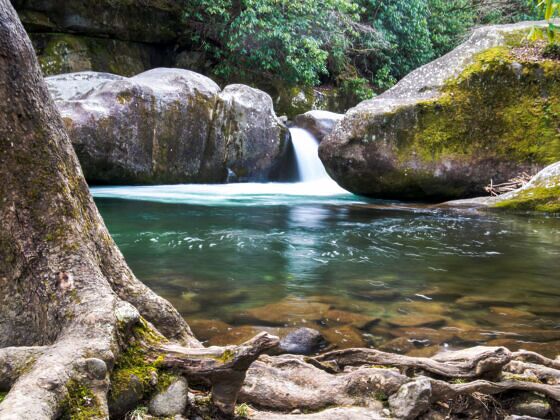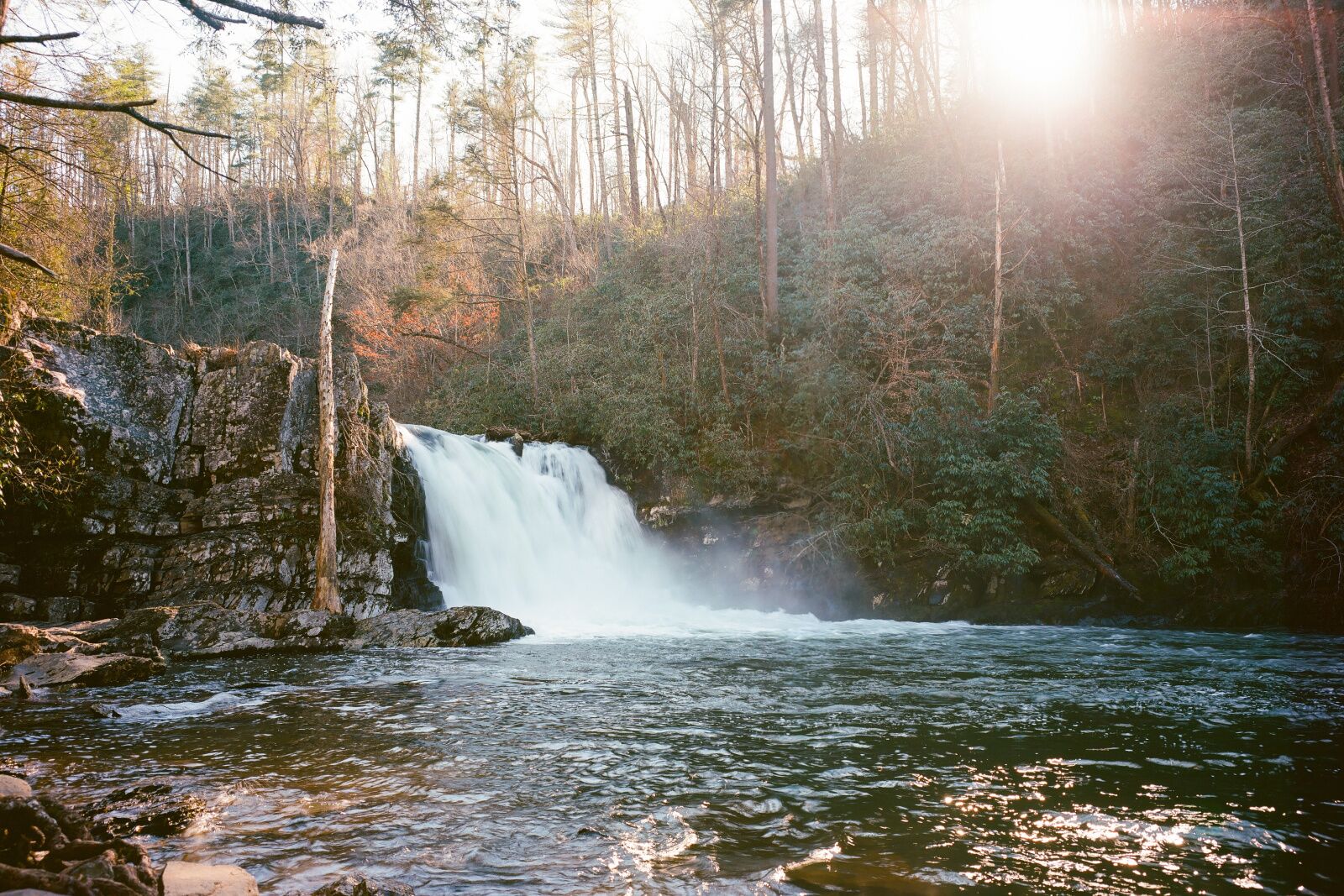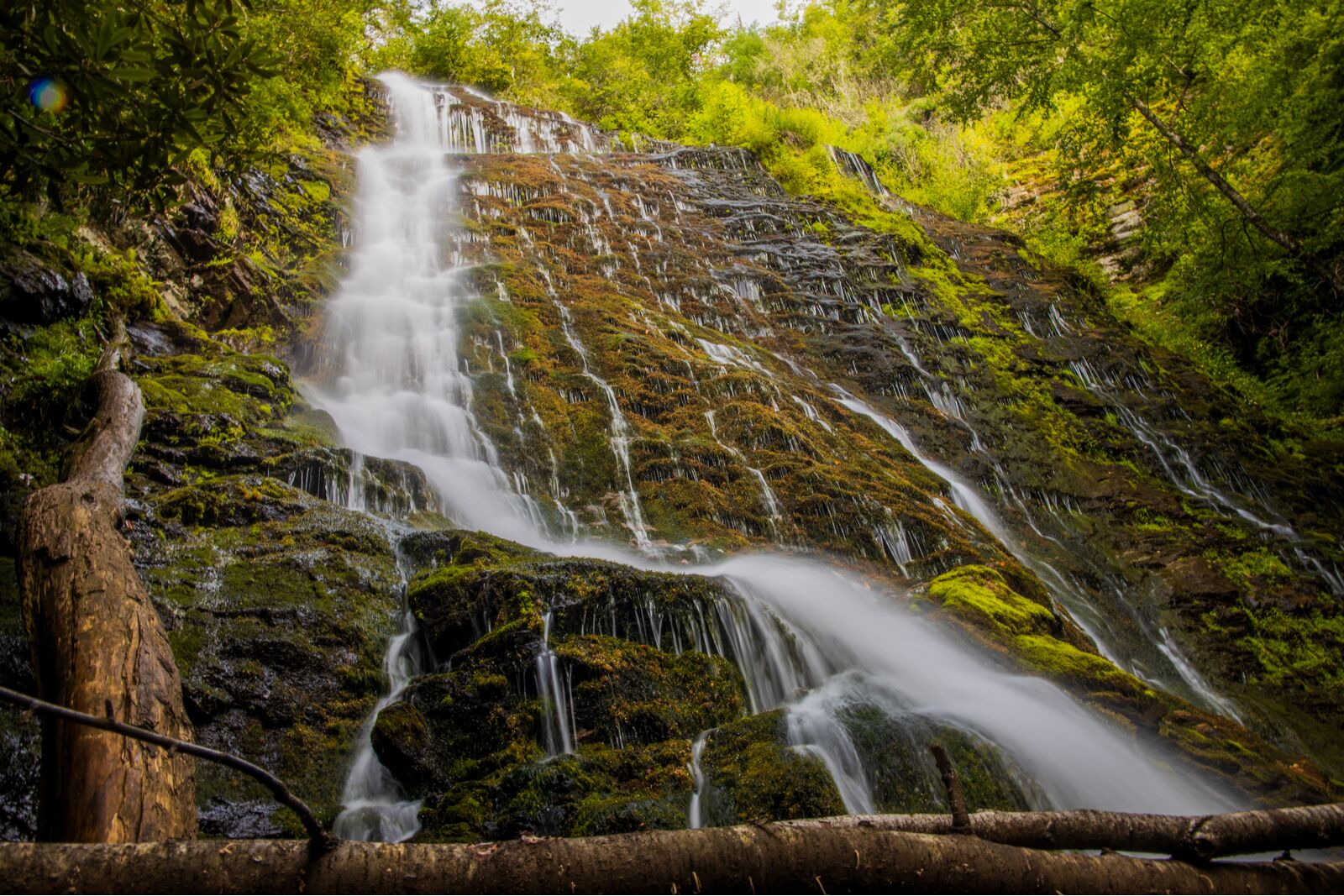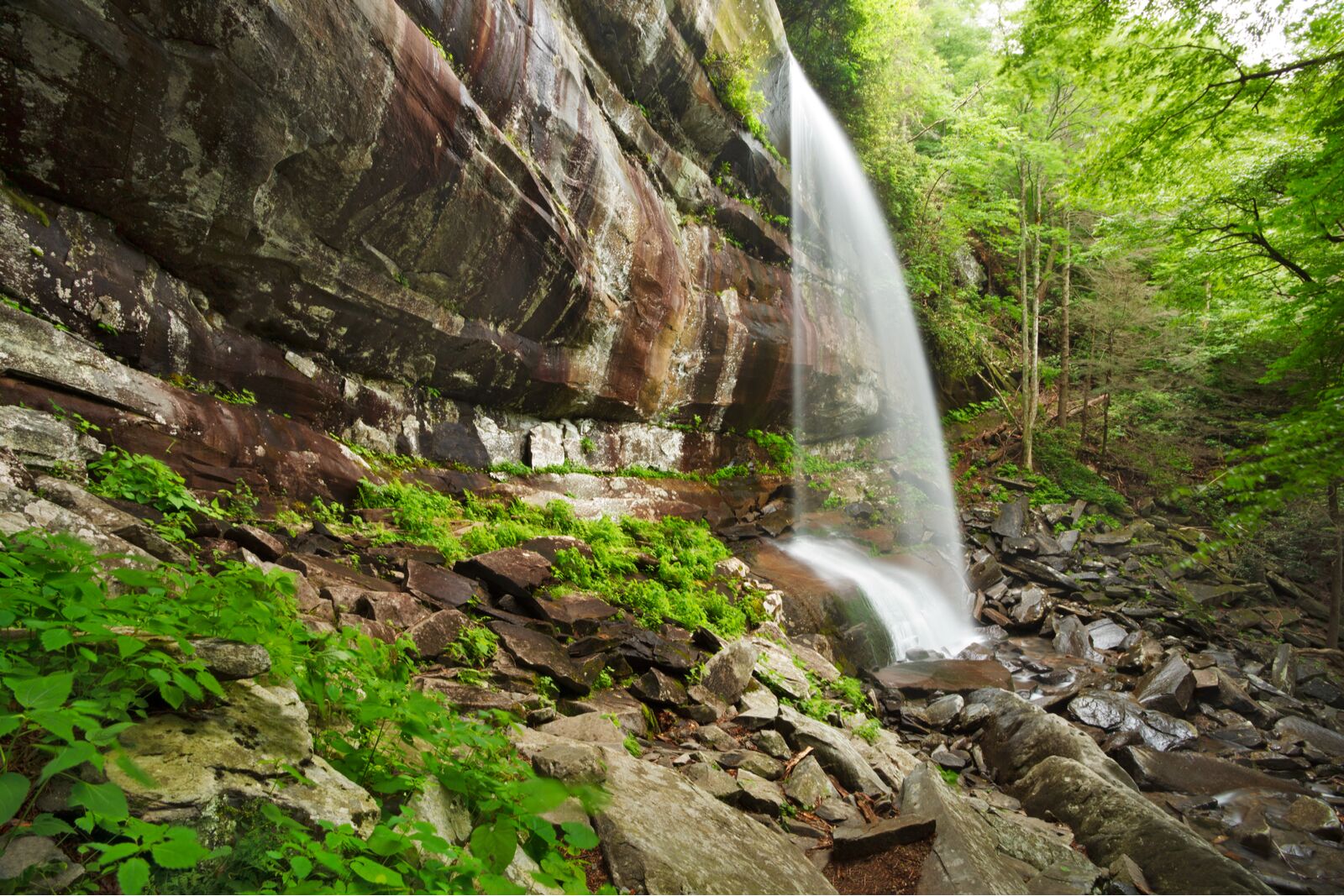Shared by North Carolina and Tennessee, Great Smoky Mountains National Park is anchored by one of the oldest mountain ranges on earth. As a peak-rippled portion of the extensive Appalachian chain, the Great Smoky Mountains are home to a staggering array of flora and fauna scattered between pine, spruce, and fir forests, among others. And they’re all fed by generous rainfall.

The 6 Best Great Smoky Mountains Waterfalls and Swimming Holes
In fact, the Smokies have the highest annual rainfall in the southeastern United States, with higher elevations receiving more than 85 inches every year. However, most of the range’s rain occurs as mist, lending the Great Smoky Mountains their nickname. The amalgamation of altitude and precipitation also makes the Smokies exceptionally biodiverse, earning the national park designations as both a UNESCO World Heritage Site and an International Biosphere Reserve.
The combination of elevation and rainfall also make the Great Smoky Mountain waterfalls numerous and varied, especially with more than 2,100 miles of streams garlanding the national park. However, the rain/elevation combo can also create hazardous trail conditions for hikers, especially along waterways. So before heading out, pack appropriate footwear and check the park’s daily weather advisory – especially during spring and summer, the rainiest seasons in the Smokies.
Thanks to more than 800 miles of marked trails, including a 70-mile stretch of the Appalachian Trail, there’s a lot of mileage to explore. To make it easy, start with these six hikes to Great Smoky Mountains waterfalls for stunning natural sights and some gorgeous swimming holes.
Abrams Falls

Photo: Trent Carmichael/Shutterstock
- Distance: 5.5 miles
- Elevation gain: +/- 630 feet
- Difficulty: Moderate
Abrams Falls might not be the tallest of the Great Smoky Mountains waterfalls, but the burly cascade packs a visual punch, plummeting about 20 feet into a waiting plunge pool. There are several routes to the falls, but the five-mile, out-and-back hike from the Cades Cove Loop Road trailhead is a manageable option for day-hikers.
En route to the falls, the Abrams Creek Trail threads a stream-laced landscape, weaving through mixed hardwood forests and groves of streamside rhododendron. There are a few minor stream crossings of offshoots of Abrams Creek, so keep an eye out for spots to stop for a dip along the way to the thundering falls. More information.
Midnight Hole and Mouse Creek Falls

Photo: AllTrails
- Distance: 4 miles
- Elevation gain: +/- 540 feet
- Difficulty: Easy-to-moderate
This hike is actually a twofer, combining a photogenic, natural swimming hole and a secluded waterfall in the Big Creek Valley.
The route starts from the trailhead near the Big Creek Ranger Station and quickly ascends toward the crystalline waters of Big Creek, arriving at the stream after roughly one mile. The trail then parallels the stream until reaching Midnight Hole, the nickname given to the spot where Big Creek spills into a deep pool (about 1.5 miles from the trailhead).
From there, you can continue another .5 miles to a 45-foot-tall Great Smoky Mountains waterfall: Mouse Creek Falls. The cascade is at the intersection of Mouse Creek and Big Creek and stair-steps over turrets of rock to form the multi-tiered falls.
For an overnight excursion, grab a spot at the secluded Big Creek Campground near the trailhead. The tent-only creekside campground is the smallest in the national park, with only 12 sites. More information.
Ramsey Cascades

Photo: Theron Stripling III/Shutterstock
- Distance: 8.1 miles
- Elevation gain: +/- 2,220 feet
- Difficulty: Challenging
Ramsey Cascades is a sweet reward for sweaty hikers, but the four-mile hike to the tallest Great Smoky Mountains waterfall is grueling. It gains more than 2,000 feet of elevation as it weaves through one of the park’s less-visited areas.
Seek out the lofty waterfall from the marked trailhead for the Ramsey Cascade Trail on Ramsey Prong Road, and be prepared for a full day of hiking that’ll reach more than 4,300 feet in elevation. From the road, the eponymous Ramsey Cascades Trail skirts towering boulders and rockshelters, hugging the banks of the Middle Prong of the Little Pigeon River before climbing to meet Ramsey Prong (a “prong” is a regional term for a small offshoot or stream from a larger river).
For the final two miles, the trail follows Rasmey Prong, rambling through old-growth hardwood forests studded with massive tulip trees, and paralleling a creek pocked with plunge pools. Still, the star of the show is undoubtedly Ramsey Cascade. The postcard-perfect falls marks the end of the route, tumbling over a natural staircase of stacked rocks with a drop of nearly 100 feet. More information.
Mingo Falls

Photo: The American Observer/Shutterstock
- Distance: .3 miles
- Elevation gain: +/- 100 feet
- Difficulty: Easy
Mingo Falls is within the Qaulla Boundary (an area similar to a reservation, except the land is owned by members of the Eastern Band of Cherokee) along the southeastern edge of the Great Smoky National Park.
It’s easy to reach and one of the loftiest Great Smoky Mountains waterfalls in the park. The hike is short, but there’s a climb – up 161 steps, to be precise. The trail begins along the Raven Fork of the Oconaluftee River, about six miles northeast of the park’s Oconaluftee Visitor Center. For a photogenic view of the falls, follow the steadily uphill Pigeon Creek Trail for just under half a mile to a strategic viewing platform, offering an unobstructed view as Mingo Creek glides through the Raven Fork Gorge and eventually tumbles into a slender, silvery 120-foot-tall ribbon of water. More information.
Rainbow Falls

Photo: kurdistan/Shutterstock
- Distance: 5.1 miles
- Elevation gain: +/- 1,620 feet
- Difficulty: Moderate-to-challenging
Tumbling down the side of 6,593-foot-high Mount LeConte (the third highest peak in the park) is Rainbow Falls, named for a dazzling optical illusion. Usually around mid-morning to late afternoon, when sunlight hits the cascading curtain of water just right, the falls emit kaleidoscopic beams akin to a rainbow.
To catch a glimpse of the polychromatic spectacle, begin at the Rainbow Falls Trailhead in the northeastern portion of the national park just outside Gatlinburg. Follow the Rainbow Falls Trail through the LeConte Valley as it traces the path of LeConte Creek, weaving between boulders and groves of rhododendron and mountain laurel. You’ll reach Rainbow Falls after 2.7 miles.
It’s quite stunning; the calm creek spills over the side of the bluff into a secluded, boulder-cradled rock grotto. While the trip to this waterfall is short at less than three miles, there’s a knee-grating ascent of more than 1,600 feet on the approach. Don’t underestimate it. More information.
The Sinks and Meigs Falls

Photo: Malee Oot
- Distance: 6.5 miles
- Elevation gain: +/- 1,330 feet
- Difficulty: Moderate
The Sinks is one of the few human-made Great Smoky Mountains waterfalls in an area where most are entirely natural. On a bend in the Little River approximately 12 miles west of the park’s Sugarlands Visitor Center, the churning cataract was formed in the late 1800s when loggers used rivers to float downed timber out of the forest. After a violent flood, loggers desperate to clear a logjam in the Little River used dynamite to free the floating timber – and inadvertently created a turbulent flume that eventually slows enough to form rock-buttressed pools. For waterfall-chasers, a visit to the Sinks offers the chance to admire a more secluded cascade (and to scope out leafy swimming holes).
To get to Meigs Falls, hop on the Meigs Creek Trail (it starts near the viewing platform overlooking the Sinks). The route begins with a gradual ascent, climbing out of the Little River Valley and eventually meeting Meigs Creek after about one mile. Be sure to keep an eye out for inviting plunge pools as the footpath parallels its namesake stream. After you reach the creek, it’s another .7 miles to Meigs Creek Falls. The secluded falls tumble about 15 feet into a small lake and offer an impossible-to-miss turnaround point for a quick out-and-back from the Sinks. More information.